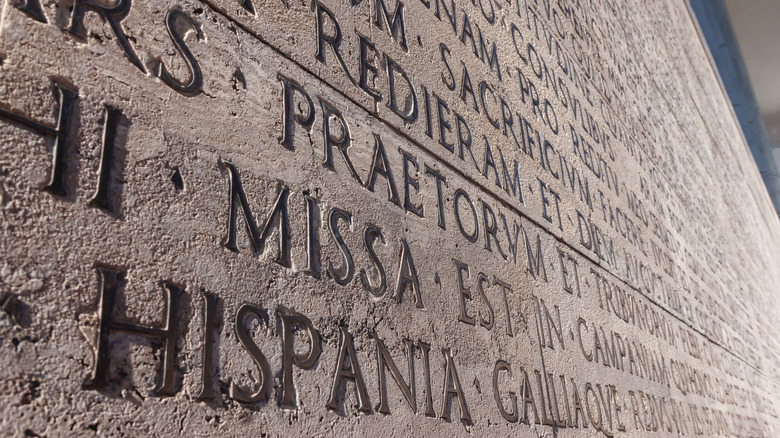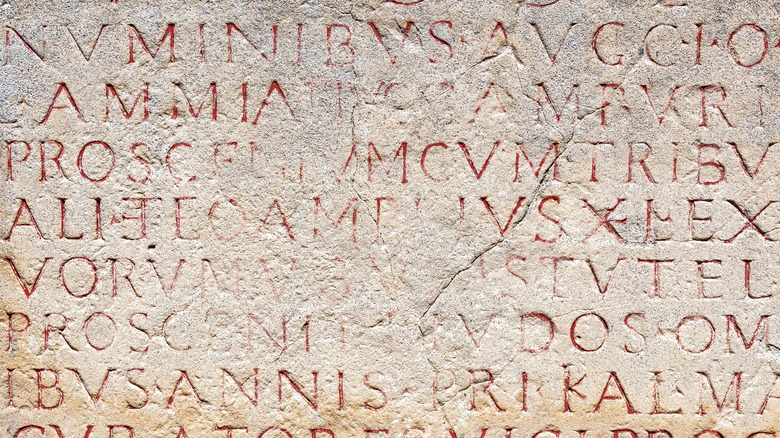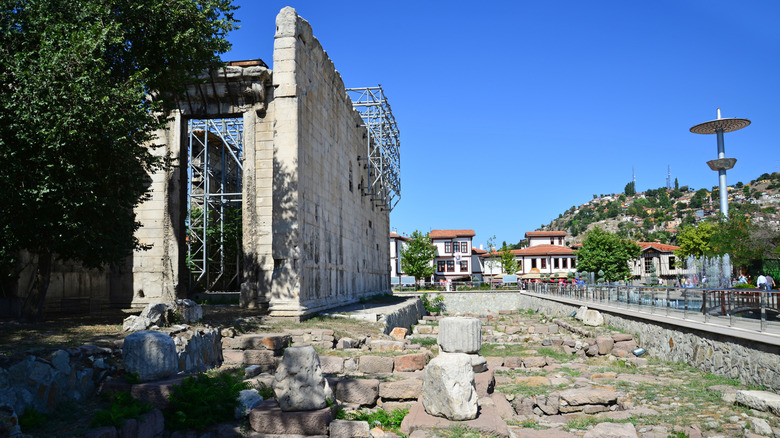AI Can Fill In Gaps In Our History, Starting With Ancient Rome
"Those who cannot remember the past are condemned to repeat it," goes the saying we've all heard and paraphrased one way or another when talking about the past, current events, and even personal matters. Maybe the best way to understand, interpret, and then remember the past is before us, as more advanced artificial intelligence can help scholars figure out answers to previously unanswerable questions about the past.
For example, an AI model was able to help scientists figure out who wrote the Bible. The technology can't identify the actual writers, but the AI helped prove that certain parts of the Bible belong to a specific group of writers. Separately, a different team of researchers was able to read a burnt scroll from ancient Rome using X-ray imaging and AI.
Now, a brand-new study involving AI shows that artificial intelligence can help researchers read inscriptions from ancient Rome by filling in the gaps and even determine the likely period an inscription comes from.
How Aeneas AI can fill in the Roman blanks
We've all seen inscriptions from ancient Rome in museums or the movies. They're often carved in stone, written in Latin in all caps. For historians, they're invaluable to understanding the distant past. Ancient writings such as the Bible, burnt scrolls, and stone inscriptions provide firsthand testimony about what it was like to live in a certain era.
That sounds great in theory, but in practice, it's a different story. Scrolls burn and stones get torn to pieces, turning historians into scholars that need to put together a puzzle that lacks many pieces. They then have to infer what the writing was about by guessing what the missing parts would have said. It's like receiving parts of a text message, and then trying to figure out what the sender wanted to say.
As the BBC explains, historians fill in the blanks by using texts similar in wording, grammar, appearance, and cultural setting, or "parallels." The process can be painstakingly slow, but that's where Aeneas comes in handy. Baptized after a Greek and Roman mythological figure, the AI model Aeneas is the result of a collaboration between historians at the University of Nottingham and Google AI scientists from DeepMind. Aeneas draws parallels to solve Roman text puzzles just like real people would, but it does so in the blink of an eye.
Is the new AI tech reliable?
The researchers fed Aeneas a database of 176,000 Roman inscriptions that includes images of the writings. The AI can then draw parallels for new inscriptions historians must analyze. The concern with any generative AI system is that it can produce hallucinations. If you really want to know the past and avoid similar outcomes, you have to work with accurate information. Tools like Aeneas distorting the past would have significant consequences.
But the team behind the AI system actually tested Aeneas to see if it works as intended. They went to Ankara in Turkey at the Temple of Augustus, tasking the AI model to date a famous Roman text. The BBC points out that the location is known as "the queen of inscriptions" for understanding Roman history. The "Res Gestae Divi Augusti" inscription was composed by the first Roman Emperor Augustus, but historians can't agree on the date it was inscribed.
The researchers put the AI to work, and Aeneas concluded that the inscription came from two possible periods. The most likely range was 10 to 20 CE, while the second was 10 to 1 BCE. Most historians agree these are the most likely windows for Augustus' writings.
The researchers then paired Aeneas with 23 historians to see whether the AI system could improve their productivity. They found that Aeneas was able to accelerate the work of real humans, allowing them to find parallels faster and discover new connections they hadn't thought of. Also, a historian using Aeneas AI came up with more accurate results than either Aeneas on its own or the human working alone.


